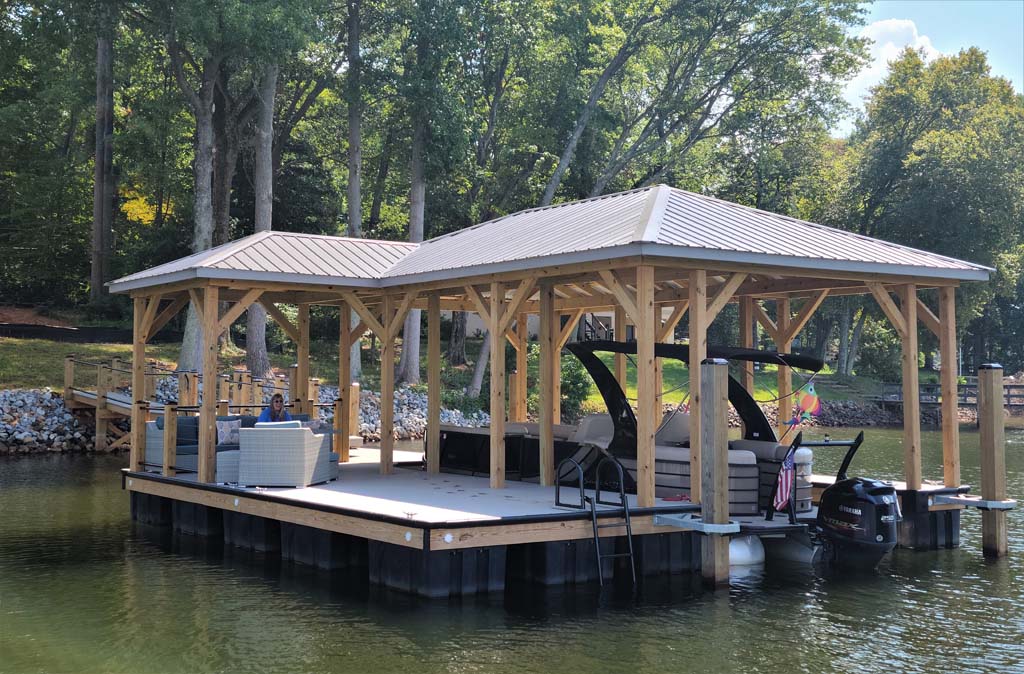Your Guide to Discovering the Best Dock Company for Top Quality and Dependability
Upgrade Your Waterfront With Long Lasting Floating Docks
Upgrading your waterfront with sturdy floating docks can significantly boost both performance and aesthetic appeals, providing a flexible service for different water tasks. These structures are made to adapt to ever-changing water levels, guaranteeing safety and security and access throughout the periods. With a series of products offered, including low-maintenance choices and standard wood, choosing the ideal dock can complement your individual style and meet functional needs. Nevertheless, understanding the subtleties of installment and upkeep is important for making certain durability and performance. When making this investment?, what factors should you consider.
Advantages of Floating Docks
Floating docks deal a wide variety of benefits that enhance their charm for various maritime applications. Unlike conventional fixed docks, floating docks surge and fall with the tide, ensuring constant availability for boats and boat no matter of ecological problems.
Furthermore, floating docks are much easier to mount and move, providing adaptability for seasonal or temporary use. Their modular style enables for modification to fit details needs, whether for personal marinas, domestic watersides, or commercial applications.
Furthermore, floating docks create very little disruption to the water setting, preserving regional ecosystems and decreasing the possibility of erosion. They also offer enhanced safety and security and security for users, as their resilient nature provides an extra forgiving surface than stiff structures.
Additionally, floating docks can promote a varied variety of tasks, such as angling, swimming, and leisure boating, making them a beneficial asset for beachfront development. Their convenience and functionality make floating docks a recommended selection for a selection of marine projects.
Choosing the Right Products
Choosing suitable products for floating docks is important to their longevity, efficiency, and total performance. When picking materials, think about variables such as environmental direct exposure, maintenance requirements, and structural honesty. Usual products include timber, plastic, aluminum, and composite choices, each offering distinct benefits and drawbacks.
Wood, while visually pleasing, needs normal upkeep to stop rot and decay. Pressure-treated wood can improve resilience, but it might still catch water damages gradually. Plastic floats, often made from high-density polyethylene, are immune to corrosion and require minimal upkeep, making them an eye-catching selection for low-maintenance applications.
Aluminum is an additional practical option, understood for its stamina and light-weight homes. It is resistant to corrosion and can stand up to harsh weather problems, although it may be a lot more pricey than various other materials. Compound products integrate the ideal qualities of timber and plastic, using a resistant and low-maintenance alternative that resembles the look of wood without the connected drawbacks.
Eventually, the option of material must straighten with the planned usage, environmental factors to consider, and budget constraints, making sure a functional and durable floating dock that satisfies your details needs.
Installation Process Review
The effective installation of a floating dock depends on mindful preparation and implementation, making sure that it operates properly in its designated environment. The initial action involves assessing site problems, consisting of water deepness, coastline functions, and prevailing climate patterns, which will certainly educate the dock design and anchoring system.
Following the site analysis, the next phase is to prepare the floating dock components. This includes constructing the frame, safeguarding drifts, and connecting any kind of essential equipment. It is important to make sure that all links are water-resistant and durable to hold up against marine problems.
When the dock is set up, the installment procedure starts with placing the dock in the water. This can include a crane or other training tools, specifically for larger structures. Proper positioning is essential for performance and safety and security.

Upkeep Tips for Durability
Routine upkeep is necessary for making certain the longevity and optimal performance of a floating dock. To achieve this, start with regular examinations at the very least twice a year, concentrating on the honesty of the dock's structure, consisting of the flotation protection gadgets and linking hardware. Search for indications of wear, corrosion, or damage, and attend to any kind of concerns promptly to stop more degeneration.
Cleaning up is an additional important element of maintenance. Eliminate particles, algae, and barnacles from the dock's surface to avoid unsafe problems and preserve visual appeal. Use a mild detergent and a soft brush to stay clear of damaging see this site the dock's materials.
Additionally, guarantee that the dock is properly secured and safeguarded to hold up against seasonal changes in water degrees and climate condition. Inspect the anchoring system for security and make modifications as required.
Enhancing Your Outside Aesthetic
To develop an aesthetically enticing outdoor space, incorporating a floating dock can substantially boost the general aesthetic of your waterside residential property. Floating docks are not just useful but can also function as a striking centerpiece that enhances the all-natural surroundings - floating docks. Available in various materials and styles, these docks can be customized to match your residential or commercial property's building design and landscape
The enhancement of decorative aspects, such as integrated lights or stylish railings, better elevates the dock's visual appeal. Take into consideration using natural wood coatings, which mix seamlessly with the atmosphere, or selecting contemporary products like light weight aluminum or composite outdoor decking that use a smooth, contemporary appearance.
Purposefully putting planters or seating locations on or around the dock can produce inviting areas that urge leisure and pleasure of waterfront you can try this out views. Additionally, including colors and appearances that harmonize with your landscape will certainly produce a natural visual throughout your outside area.

Final Thought

Updating your waterside with sturdy floating docks can considerably improve both performance and aesthetic Going Here appeals, offering a flexible option for various water tasks. Unlike traditional fixed docks, floating docks rise and fall with the trend, making certain constant ease of access for boats and boat regardless of ecological conditions.Choosing suitable materials for floating docks is crucial to their longevity, efficiency, and general efficiency.Once the dock is constructed, the setup process starts with placing the dock in the water.In summary, floating docks offer many advantages, consisting of versatility to water degree modifications and a selection of product options.